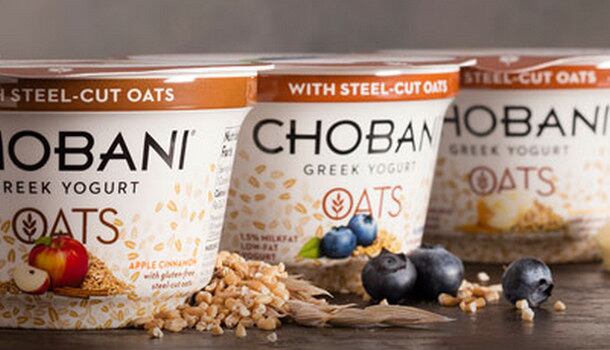IRI doesn’t single out Greek yogurt, but says US dollar sales of yogurt (multi-outlet retail sales*) grew 3.41% to $7.325bn in the 52 weeks to November 2, 2014 versus the same period a year prior; while unit sales [eg. pots of yogurt] were flat (+0.56%).
In the 12 weeks to November 2, dollar sales were up 3.44% vs the same period last year, but unit sales were down 0.95%.
Did some retailers allocate too much space to Greek?
From a category perspective, it appears that “market demand has matured, but retailers and manufacturers haven’t caught up”, Dr Kurt Jetta, PhD, founder & CEO of CPG analytics firm TABS Group, told FoodNavigator-USA.
He added: “Unit sales are flat versus a year ago, dollar sales are up slightly, but SKU (stock-keeping-unit) count gains are up about 10% overall and 20%+ for Greek yogurt [manufacturers are adding new SKUs at a much faster pace than the category is growing].
“This translates to a significant decrease in category productivity, and that is usually a precursor to retailers cutting back on their assortment,” said Dr Jetta. “And this, in turn, has a negative effect on category sales.
“While Greek yogurt outperforms the other items on a dollar velocity basis, non-Greek still generates more unit productivity. To a certain extent, the industry overcompensated assortments to respond to the shift in demand to Greek at the expense of non-Greek.
“Retailers that are over-developed in Greek right now will see disproportionately severe declines in category sales due to this exposure, where velocity declines in Greek are more than twice that of non-Greek.”

‘Chobani is now in negative territory in the Nielsen-tracked universe’
But what about Chobani, which has been instrumental in driving category growth in recent years?
“As the first-to-market in Greek yogurt, Chobani has been particularly vulnerable to these more macro category trends,” claimed Dr Jetta.
“For some time we have been tracking their SKU count gains in the 50% range, but their sales were up only in the 10-20% range. A saturation and decline were inevitable, and that is what we are seeing now as their business is now in negative territory in the Nielsen-tracked universe.”
TABS Group is projecting the yogurt category will venture into negative territory in 2015
So what are his predictions for 2015?
“TABS Group is projecting the yogurt category will venture into negative territory in 2015 unless there is a significant uptick in promotional activity, which would translate into some incremental category growth (in the low single digits),” said Dr Jetta.
“Eventually in 2016 we expect an equilibrium level of growth in the typical 2-3% range that we see for most CPG categories.”
Chobani: We still see a ton of growth potential in the US market.
Chobani would not share any figures, but chief marketing and brand officer Peter McGuinness told FoodNavigator-USA that while it was inevitable that the meteoric growth Chobani was generating a couple of years ago was going to slow down, the company still sees significant growth opportunities in the US market.
He added: “Are we generating the same level of growth as we did four years ago? Of course not. We’re growing off a much larger base, and the overall category is flattening out when you look at year-on-year sales. But month to month we’re showing improvements, November vs October, October vs September; and we gained share in the latest eight weeks.

“If you look at Greek yogurt penetration in the US it’s only 36% - Americans are eating 13lbs [per person per year] compared with 40lbs in Europe, so there is a tremendous opportunity to increase consumption. We still see a ton of growth potential in the US market.
“We’re going after new consumer segments such as babies; new geographies - yogurt still over-indexes in the Northeast and the rest of the country is still catching up; and new day-parts and eating occasions such as the mid-afternoon snack, an evening indulgence or an alternative to toast, cereal or muffins at breakfast.
“I’d also say that yes, the category - as it exists today - is flattening, but there is a tremendous amount of runway. We can really grow the [total yogurt] category from $7.5bn to 10.5bn or more.”
A flurry of new launches is planned for January including new baby products in pouches and new additions to the Oats, Simply 100, Flip ranges, added McGuinness.
He would not share any sales data about recent launches, but FoodNavigator-USA understands that sales of Chobani's new indulgent product have outpaced those of its direct competitors in this segment.
We’ve seen some pretty irrational pricing, but we’re not going to play that game
Asked about pricing and promotional activity, McGuinness said: “We’re taking a long-term perspective that’s about driving incremental growth to the category.
“But our competitors have chosen a different tack with short-term tactics to gain marginal increases [in market share], so we’ve seen some pretty irrational pricing. The amount of yogurt sold on promotion has gone up and the regular price [for a 5.3oz pot] has gone below the dollar. But that’s just not sustainable.
“We’re not going to play that game. We don’t want Greek yogurt to be commoditized. We’re aspirational but obtainable.”
TABS Group: Average retail prices are up
Asked whether consumers were being ‘trained’ to buy yogurt on deal, Dr Jetta at TABS Group said: “It is a flawed argument.

“TABS Group has not seen any meaningful decrease in overall pricing for the category or key segments. In fact average retail prices are up in the low single digit level.
“We do see evidence that some brands may be pulling back on promotional activity, as evidenced by these brands having substantial increases in average price (+6-9%) and dramatic declines in velocity per item (-20% or more).”
Dannon is deeply committed to continuing to grow yogurt consumption
So what does Dannon - the market leader in the US yogurt category - make of all this?
Michael J. Neuwirth, senior director of public relations, would not comment on promotional dynamics or share any figures.
But he added: “As the leading and largest maker of yogurt in the US, all of us at Dannon are deeply committed to continuing to grow yogurt consumption and the business of our customers (food retailers) in the US.
“Dannon Oikos frozen yogurt [launched in January 2014] is now the second leading brand of frozen yogurt in the US. For the other new product launches - Light & Fit Protein Shake and Dannon Creamery - it's too early to assess, however anecdotal feedback is very positive from shoppers (consumers) as well as customers (food retailers).”
* IRI multi-outlet data (supermarkets, drugstores, mass market retailers, military commissaries and select club & dollar retail chains).
